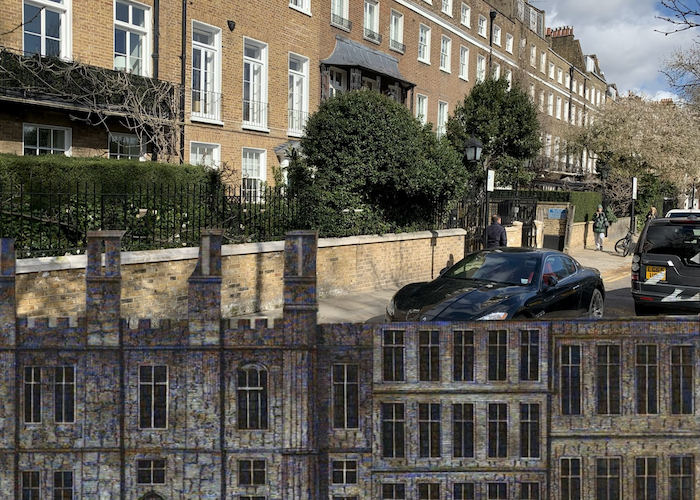It is easy to pass by 18 to 26 Cheyne Walk in Chelsea without noticing a small but concise plaque on the wall of an adjoining alley. It states that this was the exact position of a manor house built by Henry VIII. You might wonder why the almost impossibly acquisitive Henry – who had dozens and dozens of palaces, manor houses and hunting lodges up and down the country – needed yet another one. You would, of course, be absolutely right to. But this one was at least different.
Thomas Faulkner, in his classic study of Chelsea in 1810, said it was “one of the most interesting and historical spots in London”. That was partly because of its looks but also because of its association with queens of England and the curious fact that it nearly became the site of the British Museum.
The manor house itself is long gone – but then again it isn’t.
Some fragments, insignificant perhaps, but nonetheless real, are incorporated into the houses on the site. The old brickwork of the garden walls has not altogether disappeared. The tall wall to the west of number 26 is largely Tudor and archaeologists point out that the bottom courses of the front walls, which can still be seen, are of two-inch Tudor bricks from the original foundations.
In the basement of number 24 – beneath the alleyway of Cheyne Mews – are the remains of seven chambers vaulted in brickwork dating back to the original mansion. The gardens at the back, protected by high walls, have apparently retained strong features of the original palatial gardens, including, it is claimed by some, an original Tudor mulberry tree. If only…
It was here that Henry built his new manor house soon after the execution of his erstwhile friend Thomas More, who had lived nearby. It was here in Chelsea (according to a contemporary report) that Henry secretly married his third wife Jane Seymour in advance of the official ceremony in Whitehall, having been betrothed to her, bizarrely, the day after the execution of Anne Boleyn. It was here too that Henry’s fourth wife Anne of Cleves – their marriage in 1540 lasted a mere six months – eventually died in 1557, having outlived Henry and all his other wives.
In 1543 Henry married his sixth wife, Catherine Parr, to whom he assigned the manor house in which the future Queen Elizabeth was nurtured under Catherine’s care. This was not the end of the link with English queens, because Lady Jane Grey, who reigned for nine days in 1553, also lived here for part of her life.
The seventeenth century was not without incident for Henry’s Chelsea manor house either, not least because of its sequestration by Oliver Cromwell’s parliament during the civil war. But of more consequence was its purchase by Sir Hans Sloane in 1712. This could have led to it becoming the British Museum.
Sir Hans’s hitherto untarnished memory is being re-appraised these days because of his wife’s shares in slave owning companies and his own first-hand knowledge of the West Indies. But he was a major philanthropist, and you only have to make a short journey from Cheyne Walk to see evidence of this in the Chelsea Physic Garden, which he endowed to the nation.
Sloane purchased Henry’s Manor House in 1712, and in 1742 started moving his enormous collection of books and curiosities to Chelsea, where his earnest desire was that the building and its contents would be bought at a bargain price by the government to start a national collection. This didn’t happen. However, the collection was purchased and moved to Bloomsbury where, along with the Cotton collection and the Earl of Oxford’s treasures, it became a launching pad for the British Museum.
The manor house was pulled down shortly afterwards to make way for new houses. Sad to say, this may have been the right decision. Cheyne Walk was too inaccessible and the building too small to house the eventual contents of the BM. But it is still possible to walk along the posh houses of today’s street and imagine what might have been.
Many of Vic Keegan’s Lost London columns are now available in book form. Buy a copy HERE.


The head of the church of England was incredibly materialistic wasn’t he ?
[…] 1742 Sloane started moving his books and curiosities from Bloomsbury Place to Henry VIII’s former manor house in Cheyne Walk, which he had purchased in 1712. It was his earnest desire that both the building and its contents […]